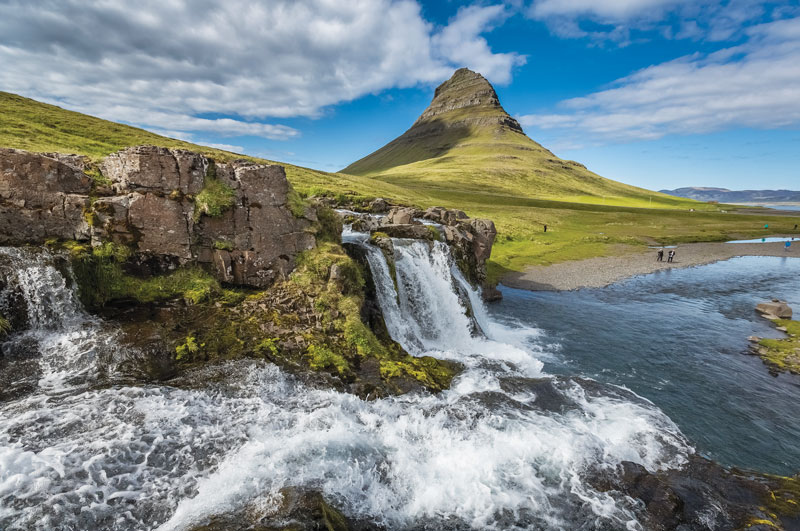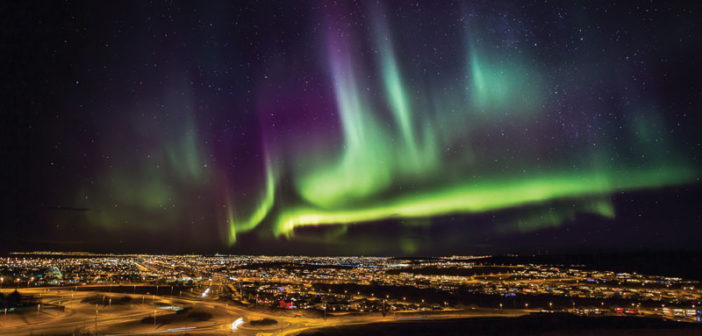INTERNATIONAL REPORT—For years, Iceland had been a darling of the travel industry, as authenticity-seeking travelers flocked to the island in search of that perfect selfie amid the country’s natural beauty. Whether climbing glaciers and dropping down into ice caves, riding through lava fields on Icelandic horses, whale-watching, searching for the Northern Lights, visiting the many waterfalls the country is known for, or taking a dip at Blue Lagoon, visitors to Iceland are treated to a number of picture-perfect backdrops in summer and winter alike. This rise in tourism was spurred in part by the advent of Wow Air, an ultra-low-cost air carrier that debuted in 2011 and ceased operations in March. The company’s collapse caused a flurry of questions, not the least of which was how it would affect tourism to the country, which had become a tentpole of the economy, and which was already suffering from slowing growth.
Earlier this month, answers to these questions became more complicated, as US Aerospace Associates Chairman Michele Ballarin announced that the firm had taken over Wow Air, with plans to resume operations—albeit at a slower pace—as early as next month. US Aerospace plans to invest $85 million in this effort.
“The demand is certainly there,” she said in a press conference about the move. “You need another airline in Iceland to be able to have good fares to choose from; competition is actually a good thing—it helps the flying public, it helps others, it creates jobs.”
Certainly, the loss of Wow Air had hurt Iceland’s economy. In February, prior to the air carrier’s collapse, the Central Bank of Iceland forecast that GDP growth would slow to 1.8% this year, approximately 1% less than its November 2018 projection, due to the contraction in tourism. In May, that forecast was revised to contract 0.4%. Last month, the bank revised that to a 0.2% contraction, despite the “stronger contraction in tourism.” According to the bank, the GDP growth outlook for 2020 has deteriorated, “as it now appears that it will take longer for tourism to recover after this year’s setbacks.” How the potential comeback of Wow Air will affect this remains unclear.
But while tour operators and those who depend on the tourism industry are feeling the pinch, there are still positive statistics. According to Statistics Iceland, there was a year-over-year increase in real GDP by 2.7% in Q2 2019, the first quarter without Wow Air.
 The story for hotel accommodations is also unclear. For instance, according to Statistics Iceland, while overnight stays have decreased in Iceland over the past few months compared to 2018, this decrease hasn’t affected all areas of accommodation the same. During a three-month period, from March to May, total overnight stays in hotels decreased by 3% while overnight stays purchased through Airbnb and similar sites decreased by 14%.
The story for hotel accommodations is also unclear. For instance, according to Statistics Iceland, while overnight stays have decreased in Iceland over the past few months compared to 2018, this decrease hasn’t affected all areas of accommodation the same. During a three-month period, from March to May, total overnight stays in hotels decreased by 3% while overnight stays purchased through Airbnb and similar sites decreased by 14%.
In June 2019, total overnight stays in Iceland decreased by 3% compared to the same month last year; accommodation paid through websites, e.g. Airbnb, decreased by 11% and other types of unlisted accommodation decreased by 30% during the same month. At the same time, overnight stays in hotels and guesthouses was relatively unchanged. Hotel room supply increased by 3%, while the occupancy rate decreased from 78% to 72%.
And in July, with a 16% decrease in the number of tourists coming to Iceland compared to July 2018, the number of overnight stays decreased by 1%. However, there was a 1.7% increase in hotels and guesthouses, 5.1% decrease in private accommodation through Airbnb, etc., and a 3% decrease in other types of accommodations.
“The contraction in tourist arrivals will undoubtedly affect hotel room occupancy, and we had already seen that materialize over the last few months after Wow Air started to scale down its operations,” Þorsteinn Andri Haraldsson, an analyst at Arion Bank, told
Hotel Business shortly after Wow Air ceased operations. “However, we are not too worried about overbuilding, as occupancy has been extremely high over the last few years, something that would not have been sustainable in the long run. This also caused considerable spillover effect to Airbnb, which grew exponentially between 2014-2018. After the government passed new regulation on Airbnb accommodations, we have seen travelers revert back to staying at hotels to some extent as Airbnb supply has decreased. We expect that trend to continue this year.”
And while Haraldsson noted that it’s likely many hotels on the drawing board will be scrapped, Arion expects hotel room capacity to increase by roughly 34% between YE 2022 and 2018, as almost 1,300 rooms are in construction. (While this number may not seem like a lot by U.S. standards, Iceland is a country made up of roughly 350,000 people, most of whom live in or near Reykjavik.)
And, while Arion predicted a 16% decrease in tourist arrivals in 2019—with Wow Air’s bankruptcy being the main factor toward the decrease—it also predicted a 5% and 4% increase in year-over-year tourist arrivals in 2020 and 2021, respectively. Should Wow Air take flight again next month, that can only mean good things for Iceland’s tourism market. HB


